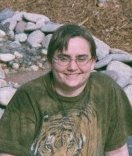I read Andrew Blum's Tubes for this month's Nebraska Learns 2.0 BookThing. The author decided to visit the Internet, offline. He went
around the world, looking at routers, cables, Internet exchanges, and data
centers. We may commonly think of the Internet as a "virtual" space, not
physically real. However, Blum's journey vividly illustrates that the Internet
is neither nowhere nor everywhere, but most definitely somewhere. The fiber optic lines follow
real-world paths, aboveground, underground, and undersea. They converge in
real-world nexuses, not unlike the hub system used for air travel. The data you
store in the "cloud" is situated in a real, physical location,
possibly in Oregon, where Blum visited data centers operated by Google and
Facebook (and had very, very different experiences at the two places). Blum saw
enough of the Internet's infrastructure that he became consciously aware of the
exact geographic path traveled by his data when he sent an email. The Internet
was built the same way roads and buildings were built--by people with tools and
heavy equipment digging up the landscape--and this book lets you meet these
people and see how they work.
I'll confess that while I was intellectually aware that the
Internet was made up of physical cables and servers, I never gave much thought
to actually where these were or how they worked. The Internet was, in my mind,
an amorphous blob floating "out there." I've always imagined that the
greatest threat to the Internet was from hackers, viruses, and other malicious
nasties operating in the virtual arena. This book enlightened me to the ways
earthquakes and catastrophic weather events could take out huge chunks of the
Internet by severing major fiber lines or knocking out an exchange center. On a
more prosaic level, the physicality of the Internet helps explain why one web
page loads slowly and another quickly, or why a page that loads slowly for you
loads quickly for your neighbor--and the next page loads quickly for you but
slow for them--if you have different Internet service providers.
From a library standpoint, this knowledge could be useful
for troubleshooting Internet troubles. Internet slow? Has your nearest Internet
exchange been hit by a storm or quake? Want to store data in the cloud? Where
is it, really? Which state? Which country? Whose servers? Is it secure, both
physically and virtually? Good things to be aware of, and good things to help
make library patrons aware of. I recommend this book for anyone who wants to look under the hood of the Internet.
